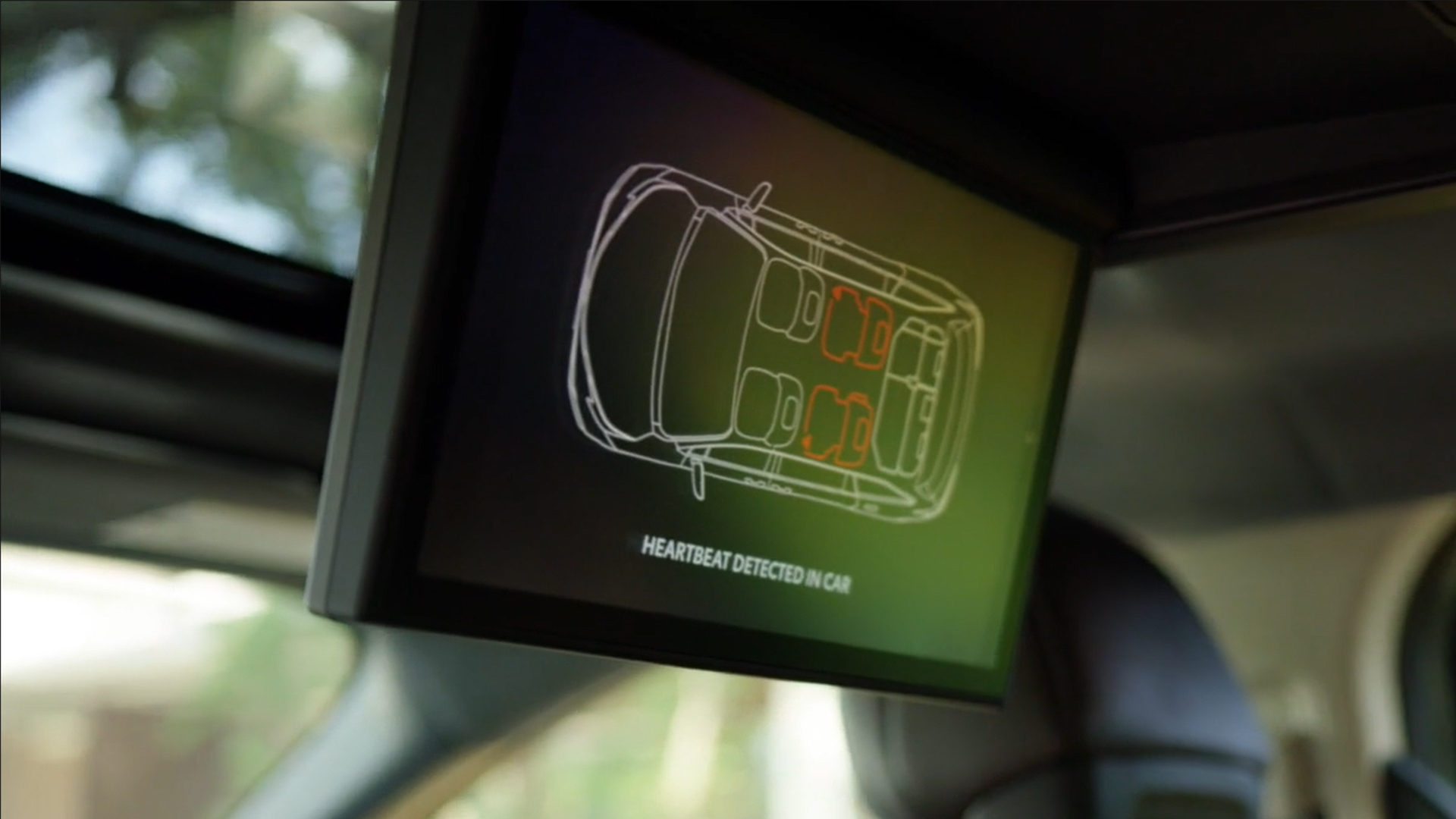

Many new cars on the road today have a plethora of safety tech features to keep drivers safe on the road. There’s lane centering, blind-spot monitoring, and rear-collision warning to name just a few. But there’s one feature inside the car that’s invaluable to those who travel with kids and pets: rear seat occupancy sensors. On Tuesday, the automaker’s independent tech center, Toyota Connected North America (TCNA), debuted a prototype of its new occupant sensing technology called Cabin Awareness.
The concept, which is similar to what we’ve seen in the past with Genesis, uses a single high-resolution millimeter-wave radar sourced from Vayyar Imaging to do the heavy lifting. The sensor, which is mounted in the headliner, is able to pick up the slightest movements within the cabin from respirations to heartbeats, meaning that it’s able to intelligently judge whether or not something living is in the cabin at any given time.


While preventing leaving unattended people and pets in the back seat is good, in theory, many automakers end up executing it poorly, resulting in false positives or failing to account for pets resting on the floor instead of the seats. That’s something Toyota is looking to change through the use of this new radar-based, in-cabin sensor concept.
The inspiration for the project, aside from preventing heat strokes in children, came from a technique used by NASA’s Jet Propulsion Laboratory. In 2015, Nepal experienced a massive earthquake that left some people buried under more than 30 feet of rubble. Responders used microwave technology developed by the lab to focus its recovery efforts by detecting breathing and heartbeats, a method similar to Toyota’s concept of passenger detection.
“NASA’s use of radar technology was inspiring,” TCNA’s Chief Technology Officer, Brian Kursar said in a statement. “The idea that you can listen to heartbeats using contact-less technology opens up new possibilities to give Toyota the potential to produce a service that is beneficial to the evolution of our in-vehicle services.”
This technique of occupancy detection goes above and beyond typical sensing methods like judging the weight on a seat or by using an in-cabin camera. Present-day methods such as these could fail to recognize a pet stowed away in the cargo area or a child sleeping underneath a blanket—all of which could lead to a child being left in the vehicle unattended and potentially dying.

Based on the size, posture, and position, the sensor can also help to classify occupants as children or adults, allowing for different kinds of seatbelt reminders, out-of-position alerting or optimizing airbag deployment in the event of a crash. Toyota doesn’t go into detail but says that the sensor could be used for intruder detection as well.
If the driver of the vehicle walks away and a child or pet is left behind, the concept is able to notify a smartphone linked with the vehicle. Should the phone not be on the occupant, the vehicle can broadcast a message to smart home devices (think Google Home or Amazon Alexa). As another failsafe, trusted emergency contacts like a family member or neighbor can be notified. And as a last resort, emergency services can be contacted should the vehicle believe a child is at risk.
Now, it’s important to stress that this sensor is just a concept. Toyota says that it’s currently giving the idea some real-world exposure through its Sienna-based AutonoMaaS program, but that doesn’t mean that the tech’s future is guaranteed. Testing is expected to continue through late 2022.
Got a tip or question for the author? Contact them directly: rob@thedrive.com